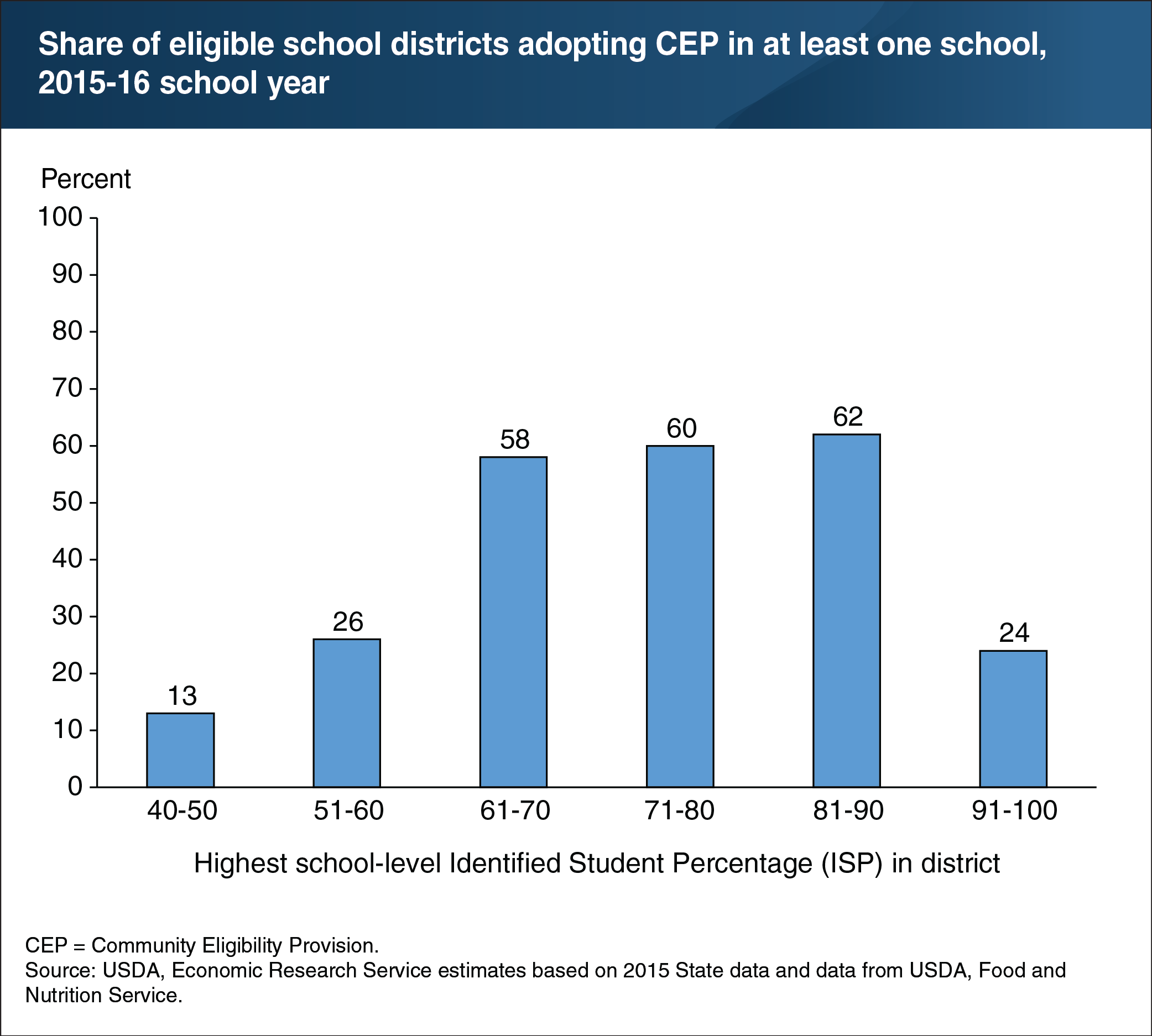Districts with high-poverty schools generally make greater use of USDA’s Community Eligibility Provision for school meals
- by Katherine Ralston and Joanne Guthrie
- 9/20/2018

The Community Eligibility Provision (CEP) allows eligible schools in high-poverty areas to offer free USDA school meals to all students. Eligibility to use CEP is based on the share of students participating in specified income-based assistance programs—known as the Identified Student Percentage (ISP). Schools are eligible to use CEP if the ISP for the school, group of schools, or district is at least 40 percent. ERS researchers used administrative data from USDA and States for the 2015-16 school year to group eligible school districts into categories based on the highest school-level ISP in the district. The researchers found that more than half of districts with schools in ISP ranges between 61 and 90 percent used CEP in at least one of their schools. Under CEP, USDA reimburses schools at the higher free-meal rates for a portion of the meals served, and the remaining meals are reimbursed at the lower paid-meal rates. At ISP levels above 62.5 percent, all meals are reimbursed at the free rates. This reimbursement schedule likely contributes to districts with schools with higher needs making greater use of CEP. However, districts that have schools with ISP levels of 91-100 percent had a lower CEP adoption rate. Some districts may have felt less need to adopt CEP because so many children’s eligibility for free meals was already established through participation in other programs. This chart appears in “High-Poverty Schools Are More Likely To Adopt the Community Eligibility Provision of the USDA School Meal Programs” in the September 2018 issue of ERS’s Amber Waves magazine.
We’d welcome your feedback!
Would you be willing to answer a few quick questions about your experience?

